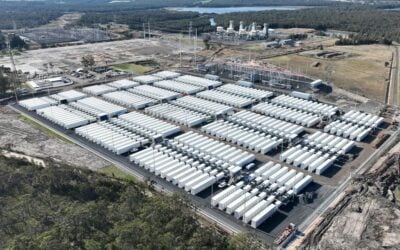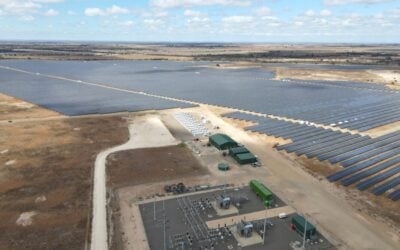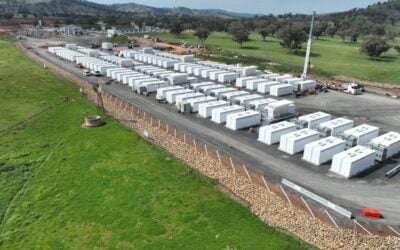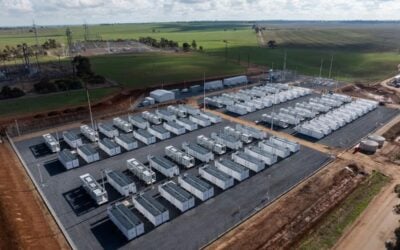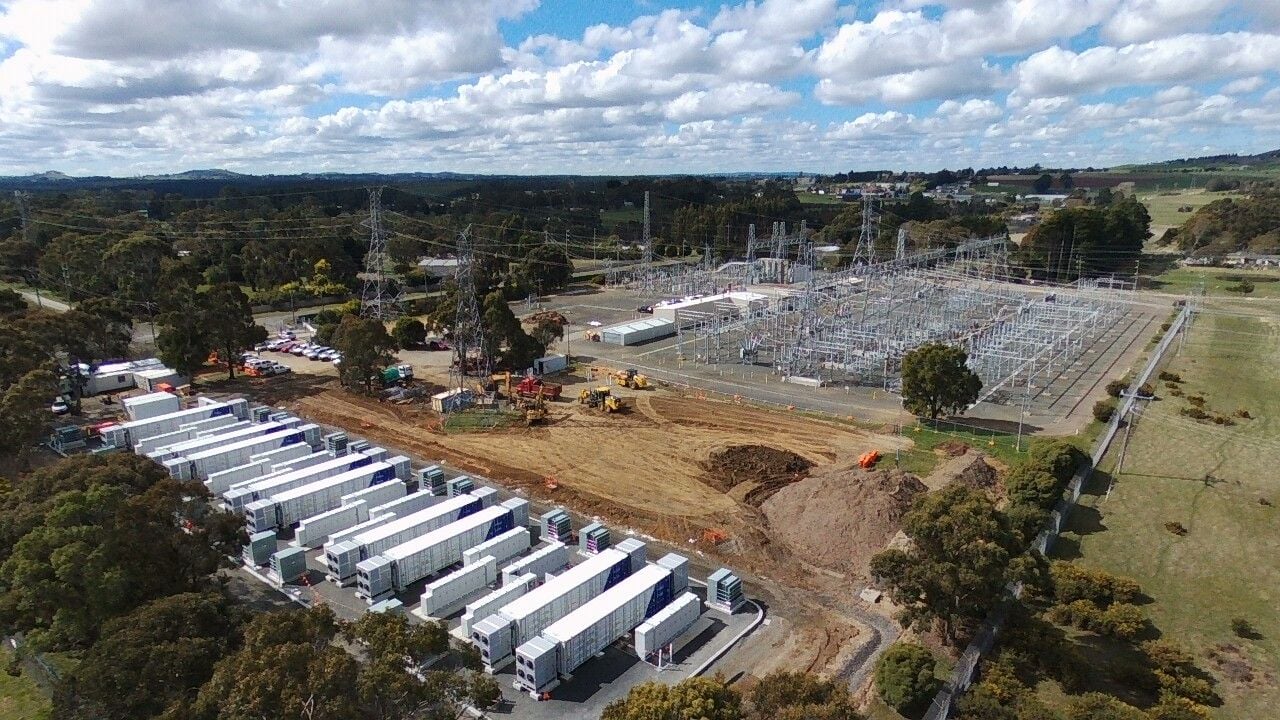
Reports into the performance of two large-scale battery energy storage systems (BESS) in the Australian state of Victoria have been published, showing that both performed as expected, or better, in 12 months of operation.
The Gannawarra Energy Storage System (25MW/50MWh), saw a 50MWac solar farm retrofitted with a battery storage system, while the Ballarat Battery Energy Storage System (30MW/30MWh) was the first standalone battery-based energy storage system to be connected directly to the transmission network in front-of-the-meter (FTM).
While neither has received as much publicity as the Hornsdale Power Reserve project in South Australia – which uses Tesla’s battery storage equipment, was installed and connected within 100 days and has just had its battery rated output and capacity increased in an expansion project – both are being seen as instrumental to the understanding of the effectiveness and potential for further rollout of battery storage across Australia.
As with Hornsdale, which was found to be an “undeniable success” in a similar report published a few months ago, the Ballarat and Gannawarra projects have delivered services for the grid and revenues to project stakeholders, with frequency response grid services the area where the batteries were most active.
Try Premium for just $1
- Full premium access for the first month at only $1
- Converts to an annual rate after 30 days unless cancelled
- Cancel anytime during the trial period
Premium Benefits
- Expert industry analysis and interviews
- Digital access to PV Tech Power journal
- Exclusive event discounts
Or get the full Premium subscription right away
Or continue reading this article for free
Project netted close to US$4.5 million of revenues in one year
The report into Ballarat’s 12 months after being switched on in December 2018 was published in late July and, like the Gannawarra report, is available on the Australian Renewable Energy Agency (ARENA) website.
It found that the Ballarat system, supplied by technology provider Fluence and designed to support 620MW of local renewable energy generation as well as allowing for the integration of more, provided a total of 7,312MWh into energy and frequency control ancillary services (FCAS) markets. This equated to AU$6.07 million (US$4.42 million) in revenues for the year, despite what the report by project partner AusNet said were “a number of early issues” of the kind that are to be expected when installing any large grid-connected power resources.
Those early issues included problems caused by unplanned outages by local telecommunications networks and some precautionary modification of the batteries’ State of Charge (SoC) which meant that availability of the system during the year was at 86.36%.
The consortium behind the project, which included energy services company AusNet, wrote in their report that four main learnings could be highlighted for the industry “to assist future storage projects”:
Technical specifications
Developers of large-scale projects should “ensure there is a clear alignment between the future operators and the technical specification,” which would mean that systems are adequately sized and include all functionality that would be desired. This is particularly important as the report showed stacking revenues i.e. performing multiple tasks and responding to multiple market opportunities, are crucial to getting battery storage delivered on a non-subsidised basis in future.
Communications architecture
Understanding the communications architecture of battery systems and the systems it will share data with is “critical to ensure continued operation and minimisation of interruptions,” the report said. This includes the ability for the system to receive dispatch targets from the grid or market operator, in this case the Australian Electricity Market Operator (AEMO) and the ability for the storage system operator to understand the ability of the batteries at any given time to respond to market signals or opportunities.
Reliability testing
Those post-commissioning issues that caused system availability to be limited early on could be resolved, the report said. Issues affected the Ballarat system’s availability for around five weeks.
Energy vs power
The report’s authors believe that the revenue figures achieved demonstrate that a high power (in megawatts) and low energy (in megawatt-hours) “provides the greatest value in revenues” and allows the system to operate in FCAS markets while also capturing high priced volatility events in the energy market.
Tesla system performed “strongly from a technical perspective”
Gannawarra meanwhile – which like Hornsdale Power Reserve uses Tesla battery system equipment – was brought online by Australian renewable energy company Edify, the developer of the adjacent solar farm, and its performance assessed in two 6-month periods, from March to August 2019 and from September 2019 to February 2020.
Edify’s report, published in August, said that the battery system’s energy market performance was in line with expectations, while its FCAS performance exceeded expectations. It also performed “strongly from a technical perspective” during the assessed period.
The project “has already provided a range of insights into what – from a development, regulatory and deployment perspective – is required to retrofit a new battery system to an existing solar farm,” even before the latest data was analysed, Edify said. With funding help to build it from the national and local governments, the system is now owned and operated by energy generation and retailing company EnergyAustralia.
FCAS markets were found to be more lucrative than energy markets, while also requiring fewer deep charge and discharge cycles. FCAS was a “key contributor to the Gannawarra Energy Storage System’s strong financial performance,” the report said, averaging AU$500,000 per month between July 2019 and February 2020.
That said, on one single day, 31 January 2020, price volatility meant the energy market saw an average price of around AU$11,000 per MWh over a three-hour period from 3pm to 6pm, meaning the system accrued revenues of around AU$485,000 on that “highly volatile” day alone.
Read the reports into the Gannawarra and Ballarat systems on the ARENA website.


